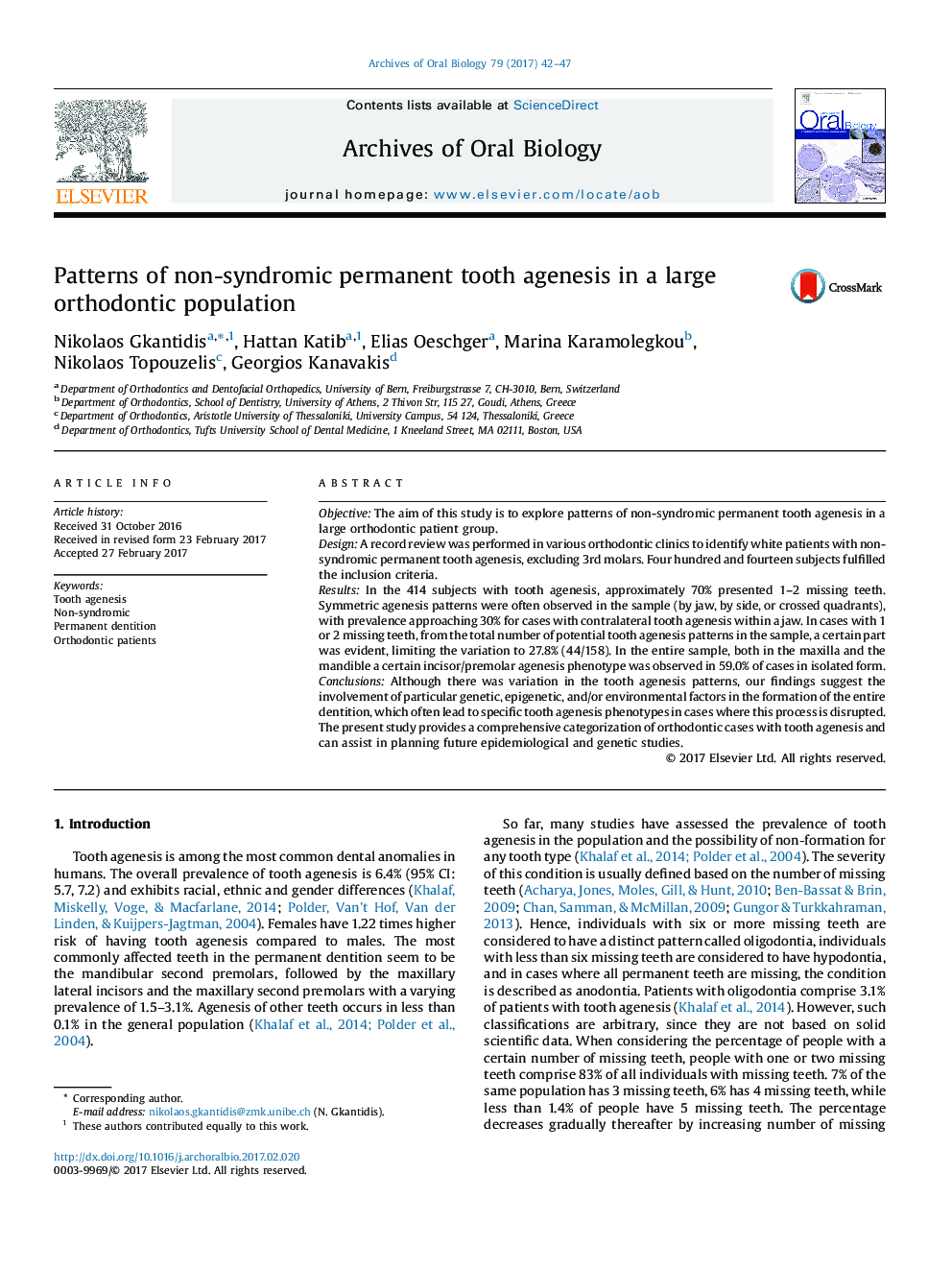| Article ID | Journal | Published Year | Pages | File Type |
|---|---|---|---|---|
| 5638058 | Archives of Oral Biology | 2017 | 6 Pages |
â¢Patterns of non-syndromic permanent tooth agenesis in 414 subjects.â¢Symmetric agenesis patterns were commonly observed.â¢In cases with 1 or 2 missing teeth, variation was limited to 27.8%.â¢An incisor/premolar agenesis pattern was often prevalent in isolated form (59.0%).â¢Particular genetic, epigenetic and/or environmental factors control tooth formation.
ObjectiveThe aim of this study is to explore patterns of non-syndromic permanent tooth agenesis in a large orthodontic patient group.DesignA record review was performed in various orthodontic clinics to identify white patients with non-syndromic permanent tooth agenesis, excluding 3rd molars. Four hundred and fourteen subjects fulfilled the inclusion criteria.ResultsIn the 414 subjects with tooth agenesis, approximately 70% presented 1-2 missing teeth. Symmetric agenesis patterns were often observed in the sample (by jaw, by side, or crossed quadrants), with prevalence approaching 30% for cases with contralateral tooth agenesis within a jaw. In cases with 1 or 2 missing teeth, from the total number of potential tooth agenesis patterns in the sample, a certain part was evident, limiting the variation to 27.8% (44/158). In the entire sample, both in the maxilla and the mandible a certain incisor/premolar agenesis phenotype was observed in 59.0% of cases in isolated form.ConclusionsAlthough there was variation in the tooth agenesis patterns, our findings suggest the involvement of particular genetic, epigenetic, and/or environmental factors in the formation of the entire dentition, which often lead to specific tooth agenesis phenotypes in cases where this process is disrupted.The present study provides a comprehensive categorization of orthodontic cases with tooth agenesis and can assist in planning future epidemiological and genetic studies.
